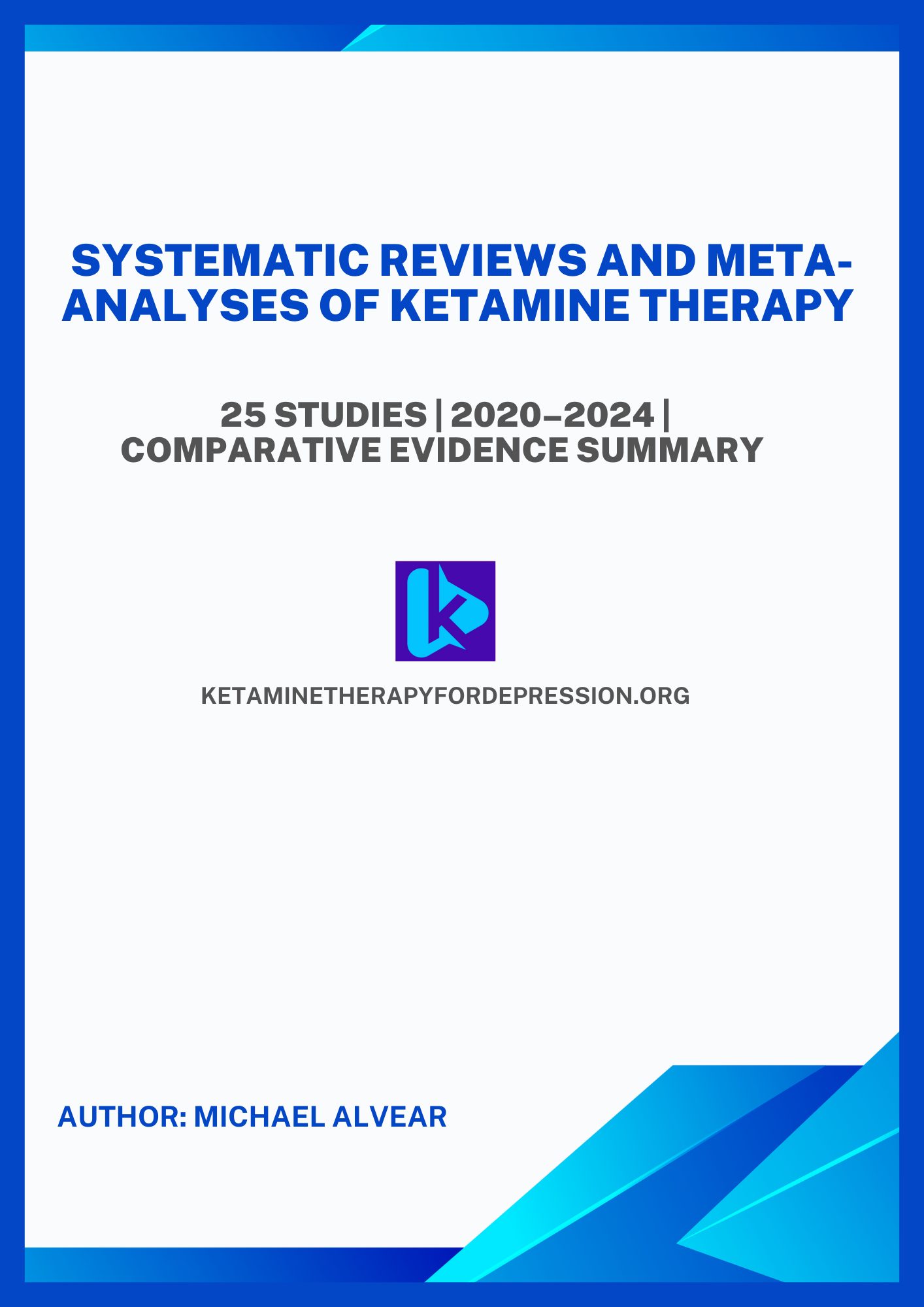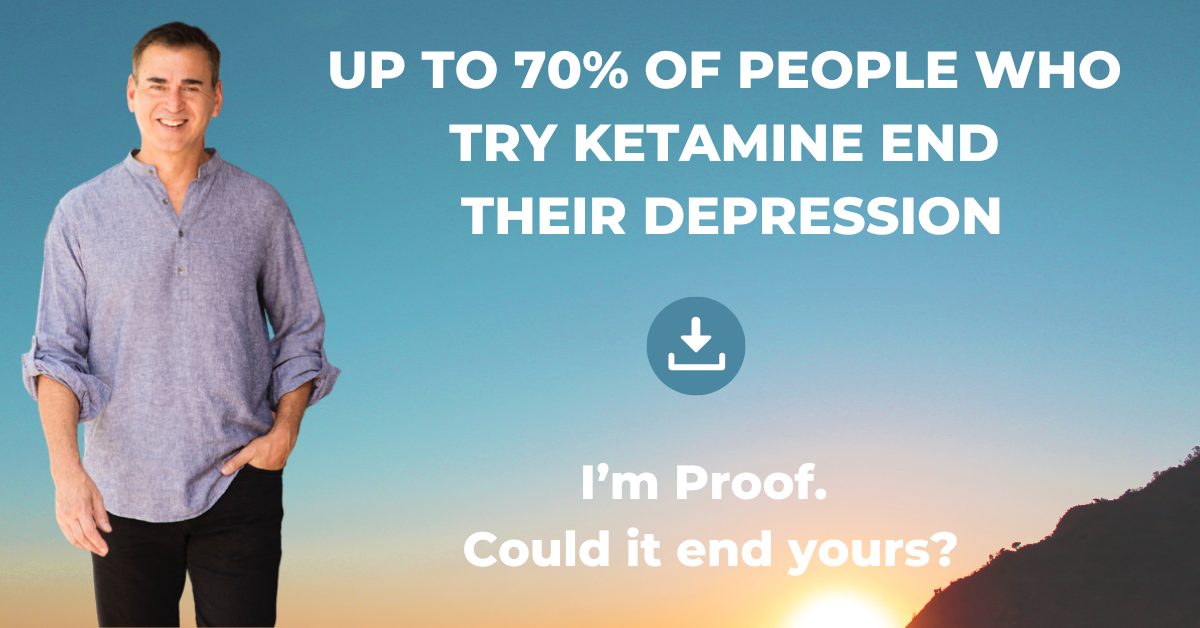Ketamine Therapy Eligibility: Who Qualifies and Who Doesn’t
This page explains the five requirements you must meet to begin ketamine therapy for depression—including a formal diagnosis, medical clearance, ability to take time off, reliable transportation, and the financial means to afford IV ketamine, injections, or Spravato nasal spray.

Let Me Walk You Through Everything I’ve Put Together on This Page
- Do You Have a Diagnosed Form of Depression?
- What Medical Conditions Disqualify You from Ketamine Therapy?
- Can You Take Time Off Work for Ketamine Treatments?
- Do You Have a Trusted Driver for Every Ketamine Session?
- Can You Afford Ketamine Therapy (IV or Spravato)?
- FAQ: Ketamine Therapy Eligibility Questions
You Must Have a Diagnosed Form of Depression
Not all forms of ketamine therapy treat every type of depression. Some—like Spravato—require proof of treatment resistance. Others—like IV ketamine or injections—can be used for a broader range of diagnoses.
Which Ketamine Treatment Works for Which Type of Depression?
As you can see from this table, different ketamine therapies are approved for different diagnoses:
| Form of Ketamine Therapy | What Form of Depression It Treats |
|---|---|
| Spravato | Treatment-resistant depression ONLY |
| IV Ketamine Infusions & Injections |
|
Types of Diagnosed Depression Explained
- Major Depressive Disorder (MDD): Also known as clinical or unipolar depression, this is the most common form of depression.
- Persistent Depressive Disorder (PDD): A chronic, low-grade depression lasting for two years or more. Less severe but long-lasting.
- Bipolar Depression: Depressive episodes as part of bipolar disorder, alternating with mania or hypomania.
- Seasonal Affective Disorder (SAD): Depression that typically appears in winter and lifts in spring.
What Counts as Treatment-Resistant Depression?
Treatment-resistant depression (TRD) means you’ve tried and failed to get relief from at least two different antidepressants or other therapies. These could include:
- SSRIs (Prozac, Zoloft, Lexapro)
- SNRIs (Effexor, Cymbalta)
- Other antidepressants (Wellbutrin, tricyclics)
- Other treatments (like TMS or ECT)
Spravato Eligibility: Severe Depression and Certified Clinics
Spravato, the esketamine nasal spray, is only available if you’re diagnosed with treatment-resistant depression. That’s an FDA mandate.
It must also be administered in a REMS-certified clinic. These are harder to access in rural areas, and many standard ketamine clinics are not certified.
Find the nearest REMS-certified clinic here.
IV and Injection Ketamine: Fewer Restrictions, Broader Access
IV ketamine infusions and injections are used off-label, meaning they aren’t bound by the FDA rules that govern Spravato. They’re accessible to more patients with a wider range of diagnoses—even if you haven’t failed two antidepressants.
What “Off-Label” Really Means—And Why It’s Standard Practice
“Off-label” use is a standard medical practice—used safely across medicine for decades. It simply means a drug is prescribed for a use not listed in its official FDA approval, but supported by research and clinical experience.
IV ketamine is FDA-approved as an anesthetic. But because it’s a generic, no company has financial incentive to pursue FDA approval for depression—even though it works. That’s why it remains off-label, despite decades of safe use.
Takeaway
Ketamine therapy requires a diagnosed form of depression—Spravato allows only treatment-resistant cases, while IV and injection ketamine accept a much wider range of clinical diagnoses.
Certain Medical Conditions Can Disqualify You from Ketamine Therapy
There’s a long list of medical conditions that could disqualify you (for any form of therapy with ketamine)—but for most people, it’s not an issue. The goal isn’t to keep you out, it’s to make sure treatment is safe and effective for you.
Even if you see a condition that applies to you, don’t panic. Many just mean your doctor will take a closer look, maybe order a few tests, or monitor you more carefully during treatment.
COMPLETE STOP SIGNS
These are deal-breakers because they create immediate life-threatening risks:
- Brain aneurysm or arteriovenous malformation
- History of brain bleeding
- Known allergy to ketamine
- Severe cardiovascular disease
- Pregnancy/breastfeeding
- Active psychosis or schizophrenia
- Actively suicidal with a plan
HIGH CONCERN
These conditions need careful evaluation and might be manageable with proper medical oversight and extra precautions:
- Uncontrolled high blood pressure
- Recent stroke or TIA
- Increased pressure in the brain
- Severe liver disease
- Uncontrolled seizures
- Severe breathing problems requiring CPAP
- Current substance abuse or alcohol abuse
CONDITIONAL
These conditions need attention but might not rule out treatment if well-controlled:
- Controlled high blood pressure
- Stable heart rhythm issues
- Controlled seizure disorders
- Mild to moderate asthma
- Treated thyroid problems
- Managed eating disorders
- Anxiety (unless severe)
- Glaucoma (needs eye doctor clearance)
- Bladder problems (with urologist clearance)
Important Notes:
Some conditions won’t automatically disqualify you from treatment but might require a closer look from your doctor. In some cases, they may order additional tests or consult with a specialist to ensure it’s safe to proceed.
Certain conditions might mean you’ll need to be monitored more frequently during treatment to manage any potential risks. Even mild conditions, when combined, can add up and create a level of risk that needs careful evaluation. It’s about tailoring the approach to your unique situation, not ruling you out entirely.
Takeaway
You can be disqualified from ketamine therapy for life-threatening conditions like aneurysms, but most health issues—like asthma or seizures—require extra screening, not exclusion.
How Can You Be Sure Ketamine Therapy Actually Works?

I pulled together 25+ systematic reviews from the last five years into one report—so you don’t have to rely on hype, guesses, or anecdotes. This is the highest level of real-world evidence we have.
Inside My Report You’ll Find
- What percent of patients enter remission—broken down by delivery method
- Which method is most effective—IV, injection, or Spravato nasal spray
- How fast ketamine can work to reduce or end symptoms
- Which combinations (like psychotherapy) may enhance response
- And a lot more…
Verified by the Platforms That Matter
This research summary report has been published across four trusted platforms that host peer-reviewed or open science content, including:
– Published ketamine research on Zenodo
– Ketamine evidence summary hosted on SSRN
– Scientific report on ketamine outcomes on Figshare
– Evidence-based ketamine therapy report on OSF
View the PDF Report Here:
You Must Be Able to Take Time Off Work for Each Ketamine Session
Taking ketamine for the treatment of depression means blocking out a significant chunk of your schedule. This isn’t like a quick doctor’s visit where you can return to work afterward – you’ll need to set aside most of your day for each treatment.
Let’s break it down: you’ll probably need 20-30 minutes to get to the clinic, about 2 hours for the actual treatment, and another 20-30 minutes to get home. That’s a solid three hours.
Here’s something you have to take into account: for several hours after treatment, you’ll likely feel pretty out of it. We’re talking drowsiness, fatigue, feeling lightheaded, and having trouble with balance.
Trying to work, concentrate, or focus on anything important during this time? Pretty much impossible. When you add it all up – the travel time, the treatment itself, and the recovery period – you’re looking at losing most of your day.
With anywhere from 10-24 treatment sessions or more (depending on the best ketamine therapy for you), that’s a lot of time off work. Some clinics offer evening appointments, which can help if you work regular daytime hours. For example, a 3:00 pm appointment means you could work that day until about 2:00 pm.
It’s important to have an upfront conversation with your employer about taking these days off. Many people use sick days or medical leave, just like they would for any other medical treatment. If you’re concerned about privacy, remember you don’t have to share the specific details – you can simply say you’re having a medical procedure that requires recovery time.
Bottom line: Before starting low dose ketamine for depression, make sure you can realistically manage this time commitment. Your healing process needs to come first, and there’s just no way to rush through this or multitask on treatment days.
Takeaway
Ketamine treatment typically requires 3-4 hours per session and 10 to 24 sessions total—most patients need sick leave, medical time off, or a flexible job to manage it.
You Need a Trusted Driver to Take You to and From Every Session
You must have someone drive you to and from your ketamine treatment – this isn’t optional or a “just to be extra safe” kind of rule. Here’s why: Ketamine’s effects don’t just switch off when your session ends. The drug continues to affect your brain and body for several hours afterward.
Think about it this way – ketamine is actually used as an anesthetic in operating rooms. While the dose for depression treatment is much lower, it still seriously impacts your ability to function.
After treatment, you’ll likely feel dizzy and disoriented. Your reaction time will be slower, your coordination will be off, and your judgment will be impaired.
You might feel like you’re in a bit of a fog or dream-like state. Some people describe it as feeling “wobbly” or like they’ve had a few drinks. Your depth perception and ability to judge distances – crucial skills for driving – won’t be working properly.
This isn’t like taking a regular antidepressant where you can pop a pill and drive home. Operating any kind of vehicle in this state would be as dangerous as driving under the influence of alcohol – it puts both you and others at serious risk.
In fact, it’s not just dangerous – it’s illegal to drive while under the influence of ketamine, even if it was legally administered in a medical setting.
Your driver needs to be a responsible adult – not a taxi, rideshare, or public transportation. This person should be someone you trust, as they’ll need to make sure you get home safely and get settled.
Planning your transportation might feel like a hassle, but it’s a non-negotiable part of ketamine therapy. If you can’t arrange reliable transportation to and from every session, you’ll need to wait until you can before starting treatment.
Pro Tip: Ask your clinic if rideshares like Uber or Lyft are allowed. Many understand that not everyone has a friend or family member available for every session. Most clinics just require that you have a ride home, not who provides it.
Takeaway
You legally can’t drive after ketamine treatment—every session requires a trusted adult to get you home safely, no exceptions or workarounds.
You Must Be Able to Afford Ketamine Therapy—IV, Injection, or Spravato
Ketamine therapy isn’t cheap. IV infusions and injections? Not covered by insurance. That means you’re paying 100% out-of-pocket, and a full course can easily hit $6,000—or more.
Spravato, the FDA-approved nasal spray, is covered by insurance—but only partially. Even with coverage, you’re looking at over $8,000 in out-of-pocket costs for a full course of treatment.
But here’s the twist: if you qualify for the manufacturer’s subsidy, your cost could drop to almost nothing. The catch? It depends on your insurance.
Want the full breakdown? Read my complete guide to ketamine therapy costs and insurance coverage so you know exactly what you’re up against.
Frequently Asked Questions About Ketamine Therapy Eligibility
How do I know if ketamine therapy is right for me?
Ketamine therapy is only right for you if you meet five non-negotiable criteria: you must have a diagnosed form of depression, meet strict medical guidelines, be able to take time off work, have someone to drive you to and from treatment, and be able to afford it.
Certain conditions automatically disqualify you. These include brain aneurysms, a history of brain bleeding, severe heart disease, pregnancy or breastfeeding, active psychosis or schizophrenia, or being actively suicidal with a plan.
Other conditions might or might not disqualify you depending on how well they’re controlled, like high blood pressure, liver disease, seizures, asthma, or past substance abuse.
Each treatment session runs about two hours, and recovery can take another four to six. You’ll likely feel foggy, lightheaded, or physically off-balance—making it unsafe to work or drive.
If you can’t meet all five criteria, ketamine therapy is not an option until those barriers are resolved.
What kind of depression does ketamine therapy treat—and do all types qualify?
The answer depends on which form of ketamine therapy you’re considering. Spravato, the esketamine nasal spray, is only approved for treatment-resistant depression—meaning you must have tried at least two different antidepressants without relief.
IV infusions, injections, and oral ketamine are used off-label and can treat a much wider range of depression types, including major depressive disorder, persistent depressive disorder, bipolar depression, and seasonal affective disorder.
This matters because Spravato requires strict proof of diagnosis and failed treatments, while other forms don’t.
If your depression doesn’t meet the treatment-resistant standard, you won’t qualify for Spravato—but you will likely qualify for IV, injection, or oral ketamine as long as you’ve been diagnosed with one of the accepted depression types.
Clinic discretion exists but is limited. While no federal guidelines enforce diagnosis requirements for off-label treatment, most clinics still follow their own institutional standards and will not treat undiagnosed patients.
Am I eligible for ketamine treatment—and what could disqualify me?
Eligibility depends on which form of ketamine therapy you’re pursuing. Spravato, the esketamine nasal spray, is only available to people diagnosed with treatment-resistant depression who have tried and failed at least two antidepressants. IV infusions, injections, and oral ketamine don’t require this—they can be used to treat a broader range of depression diagnoses without proving past treatment failure.
Even if you meet those criteria, certain medical conditions will disqualify you. These include brain aneurysms, prior brain bleeding, severe cardiovascular disease, pregnancy or breastfeeding, active psychosis or schizophrenia, or being actively suicidal with a plan.
Other conditions may not disqualify you outright but still require medical clearance. These include high blood pressure, liver disease, seizure disorders, respiratory issues, or recent stroke. Clinics may require extra screening, monitoring, or specialist consultation before proceeding.
Can I do ketamine therapy for depression if I also have anxiety?
You can do ketamine therapy for depression if you also have anxiety, but only if the anxiety isn’t severe. Anxiety is considered a conditional concern—not a complete stop sign—which means treatment might still be possible depending on how well the condition is managed.
This matters because ketamine’s dissociative effects can intensify certain symptoms during treatment, and unmanaged anxiety can make the experience more destabilizing. Clinics will want to understand how your anxiety presents and whether it interferes with safety during or after the session.
Patients with mild or treated anxiety are often cleared for therapy without issue. But if your anxiety is severe, especially if it overlaps with panic attacks or intrusive thoughts, you may need further evaluation before starting.
It’s not about ruling you out—it’s about making sure the treatment environment won’t worsen existing symptoms or create additional risk. The decision will come down to how your clinic interprets your overall stability.
Can I do ketamine therapy for depression if I drink a lot or use weed regularly?
Heavy alcohol or cannabis use doesn’t automatically disqualify you from ketamine therapy, but it raises red flags that clinics take seriously. Both substances act on the same brain systems ketamine affects, including glutamate signaling and neuroplasticity. That overlap can make the treatment less effective—or harder to predict.
Most clinics won’t demand full sobriety, but they will ask about frequency and intent. If you’re drinking daily, using weed heavily, or relying on either to manage symptoms, they may delay treatment or bring in medical oversight. Patients are often asked to avoid alcohol for at least 24 hours before and 48 hours after each session to protect the “plasticity window,” when the brain is most open to change.
That said, ketamine has shown early promise in reducing cravings for alcohol—and there’s emerging research suggesting similar effects for cannabis. Some patients report that ketamine helped interrupt their urge to drink or use. But those benefits don’t cancel out the risks.
If your use feels more like self-medication than recreation, it won’t necessarily disqualify you—but it won’t be ignored either.
